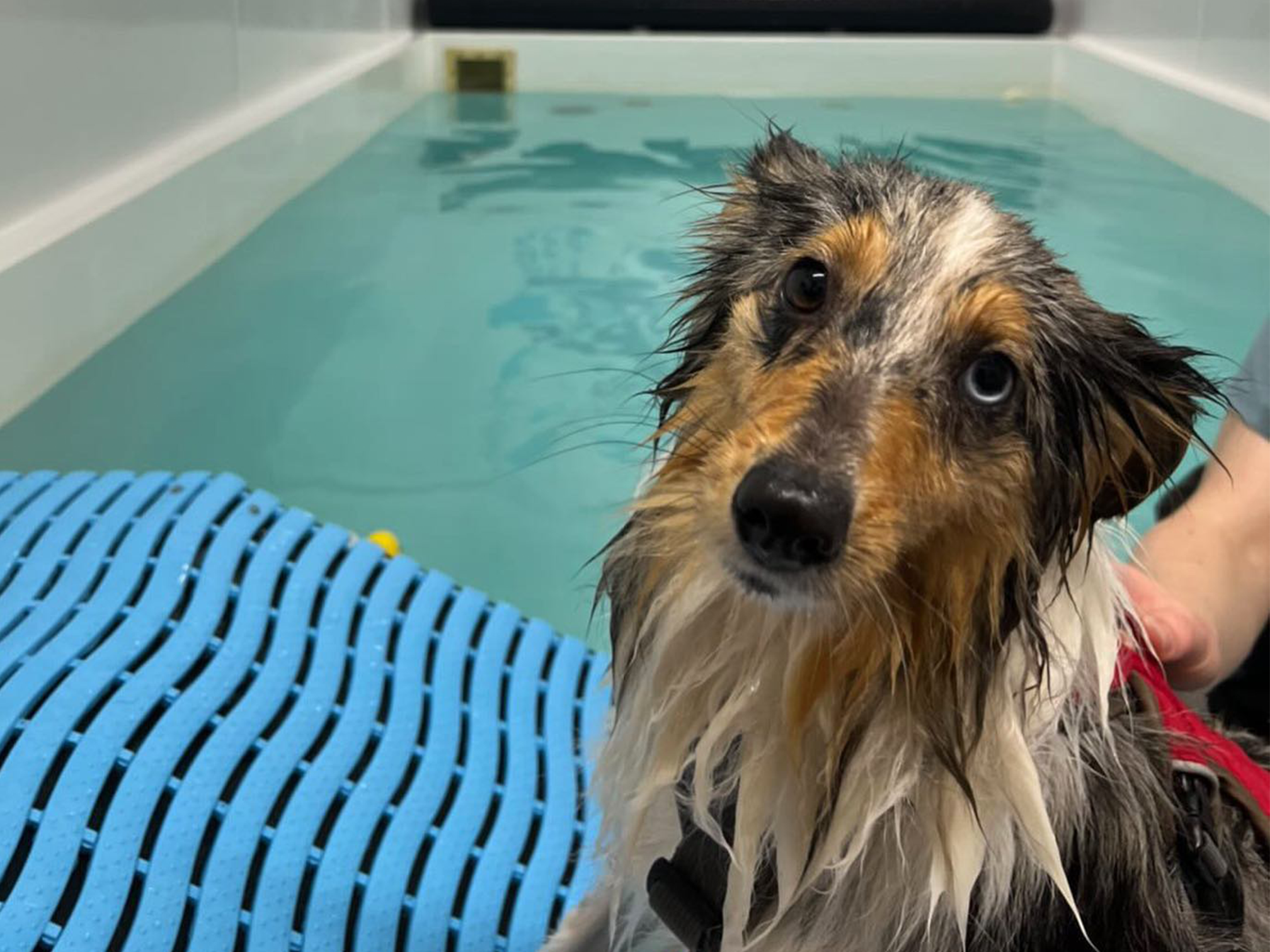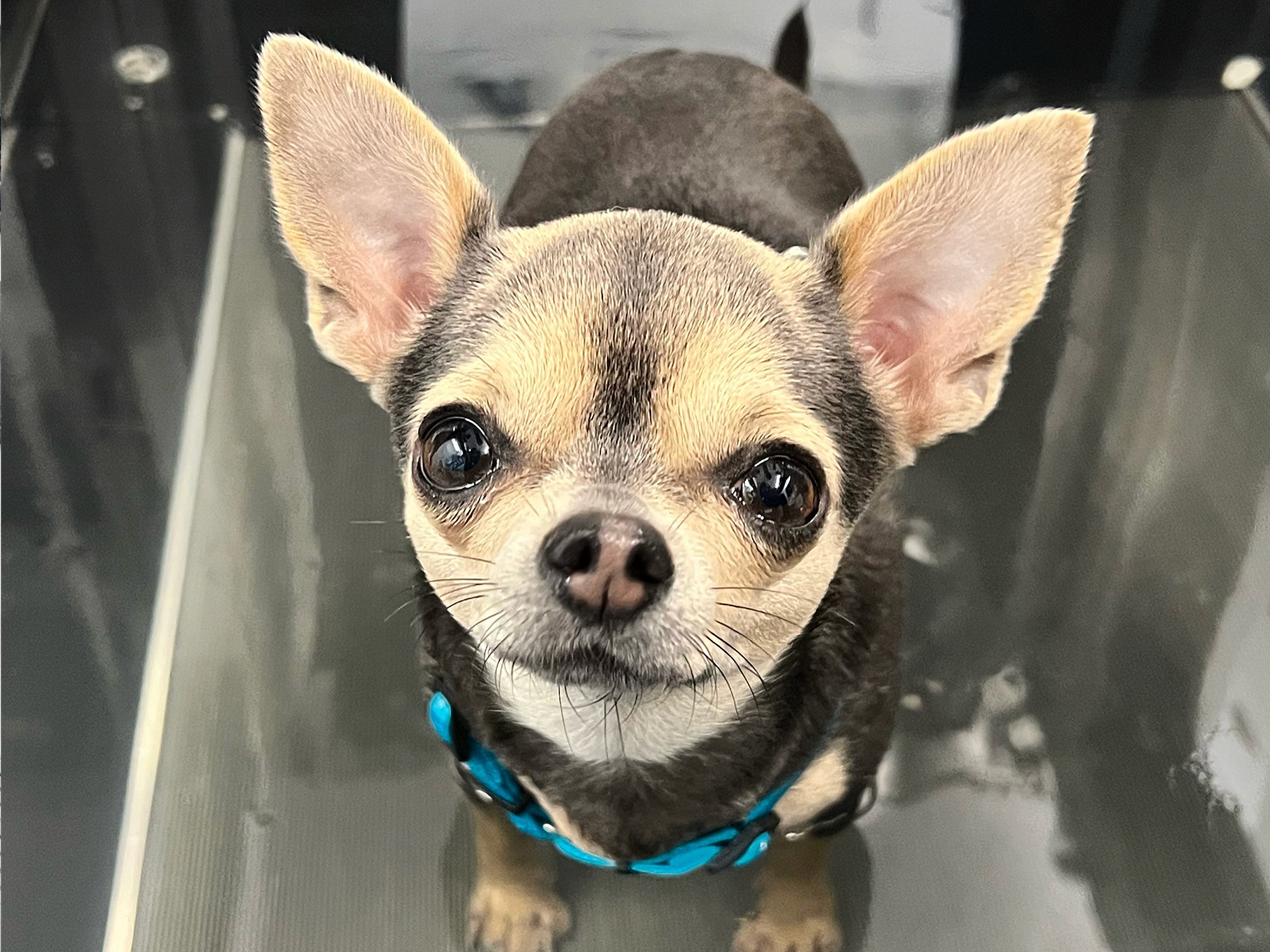Hip and elbow dysplasia
The Hip Joint
The hip joins the hind leg to the body and is a ball and socket joint with the Femeral Head located at the top of the Femur fitting into the Acetabulum located in the Pelvis. In a healthy Hip the Femeral Head rotates smoothly within the socket and the bones should through their shape fit perfectly with no rubbing or friction. The joint has been likened to a caravan tow bar. Around the joint is the Articular Cartilage which acts as a cushion and supports the joint with Synovial fluid. The Synovial fluid lubricates the Articular surfaces. The Articular Surface is where the bones actually touch each other and in a healthy joint should be perfectly smooth. Ligaments attach the Femoral Head to the Acetabulum and this helps to strengthen the joint. In addition the Joint Capsule which is an extremely strong connective tissue provides additional support and stability to the joint therefore a dog with a healthy hip will have all these factors working perfectly together to give stability and strength to the joint.
Hip Dysplasia occurs where the support mechanisms mentioned above fail in some way. This typically applies to large or giant breeds where an abnormal Femoral Head and/or a shallow Acetabulum results in a weakened joint structure due to abnormal wear and tear and erosion of the joint. Most dogs will be born with a healthy hip joint however as a result of mainly the breeds genetic make-up Subluxation may occur. Subluxation is where the Articular surface of the bones become slightly separated as the soft issues that support the joint develop abnormally. The muscles, ligaments and connective tissues do not provide sufficient support. As a result of the two bones not rotating freely in the socket the Acetabulum can become shallow as the shape of the Articular surfaces severely changes. Hip Dysplasia can and cannot be bilateral and can affect one or both hips although a surgical procedure will usually only be carried out on one joint at a time.
Where this occurs the dog will eventually end up with Osteoarthritis. It is possible to identify a dog with Hip Dysplasia as the dog will walk with a slightly twisted gait and will resist movements that require flexion or extension due to the resultant pain. They will show stiffness and pain in the rear legs following exercise or after long periods of rest i.e. first thing in a morning and may struggle to climb stairs.
The Elbow Joint
The Elbow consists of three bones, the Radius, Ulna and Humerous. As a puppy grows all of these bones should grow together and fit together smoothly to form the elbow joint. For normal elbow function, tendons, muscles and ligaments allow the elbow normal movement where the Radius and Ulna act as one bone as they are held tightly together by several ligaments and move together at all times. The bottom end of the Humerous houses the Supratochlear Foramen. The lower end of the Humerous has two rounded knobs known as the Lateral and Medial Condyles. Within the Condyles there is a hole between them that extends fully through the bone known as the Supratrochlear Foramen. At the top of the Ulna is a hook like process that fits perfectly into the Supratrochlear Foramen of the Humerous together with a curved ridge known as the Trochlear Notch that rests against and rotates between the Lateral and Medial Condyles, the Condyles of the Humerous rest on the Medial and Lateral Coronoid processes found at the base of this and provide the support for the weight of the dog. The upper end of the Radius also sits between the Coronoid Processes of the Ulna and assists with the support of the weight of the dog as it transfers down through the Humerous. The Medial Coronoid Process of the Ulna sits level with or slightly below the surface of the Radius. All of the surfaces that move or rub against each other are covered with cartilage and to function correctly should be perfectly smooth causing no friction as this will cause inflammation of the joint.
The cause of Elbow Dysplasia is not known however there are many theories that exist. As a result of fast growing large breed puppies, bone abnormalities form causing the joint to become unstable which causes friction and hence inflammation of the joint. The end result is Osteoarthritis, elbow pain and lameness. The condition is typically found in the joints of puppies aged between 5 and 7 months old where the joints have developed abnormally. It is an inherited disease affecting mainly medium to large breeds. A high occurrence of Elbow Dysplasia occurs in the Bernese Mountain dog, German Shepherd, Rottweiler, Golden Retriever, Labrador Retriever. The condition is diagnosed as one of four different diseases, these are known as:
Fragmented Medial Coronoid process (FCP)
This condition usually develops in very young dogs often before they reach 6 months of age and the larger breed puppies and appears to be a genetic disorder. This is the most common form of Dysplasia which is the falling apart and breaking up of the cartilage around the Ulna. The small fragment of cartilage and bone from the Ulna becomes loose within the joint causing it to rub against the Humerous which in turn causes inflammation (Arthritis).
Osteochondrosis Dessicans (OCD)
This condition appears in the form of lameness usually between the age of 6 to 9 months of age. The cause is thought to be due to trauma, nutrition and genetic factors. Osteochondrosis Dessicans is an abnormality of the cartilage and the bone that lies beneath where fragments of the cartilage loosen from the bone and can either remain attached to the bone like a flap or can break off and float free in the joint. This is extremely painful to the dog. In the elbow joint this often happens on the Medial Condyles of the Humerous.
United Anconeal Process (UAP)
This condition is where the hook or Anconeal Process fails to connect properly to the Ulna which results in it floating loose. These should have fused together within 20 to 24 weeks of age. The ligaments hold the Anconeal Process to other sections of the bone close to the position it should have been in but it is not a strong enough hold to keep it where it should be. This causes extreme pain to the dog as the Ulna and Humerous are unable to interact together properly. The joint is therefore unstable and the loose Anconeal process can catch between the Ulna and the Humerous causing irritation and bruising of the articular surfaces.
Incongruity of the elbow joint
Incongruity of the elbow is where the Radius and the Ulna do not grow at the same rate of speed. As the Humerous does not meet the Radius and the Ulna in the correct place this puts additional wear and tear on the surrounding cartilage. As this places additional weight on certain parts of the bone, this can lead to fragmentation of the Medial Coronoid process and other abnormalities.
We would use the treadmill to treat any form of Dispasia because:
- The buoyancy of the water supports the joints
- It provides maximum flexion and extension of the limbs
- Quickly increases muscle mass
- Re educates the gait pattern following the muscle atrophy in the fore or hind limbs
- Provides an earlier return to activity
- Very easy to observe the range of movement (ROM) through the glass sides
- The dog is unable to cheat unlike in the pool where they have a tendency to tuck their hind legs up making it difficult to get a good rom.
If you believe your dog is in need of Hydrotherapy, or your Vet has recommended treatment, first thing you need to do is call us on 01635 521915 or send us an email at info@ActNow-Newbury.co.uk
Contact Us
Call: 01635 521915
Email us







